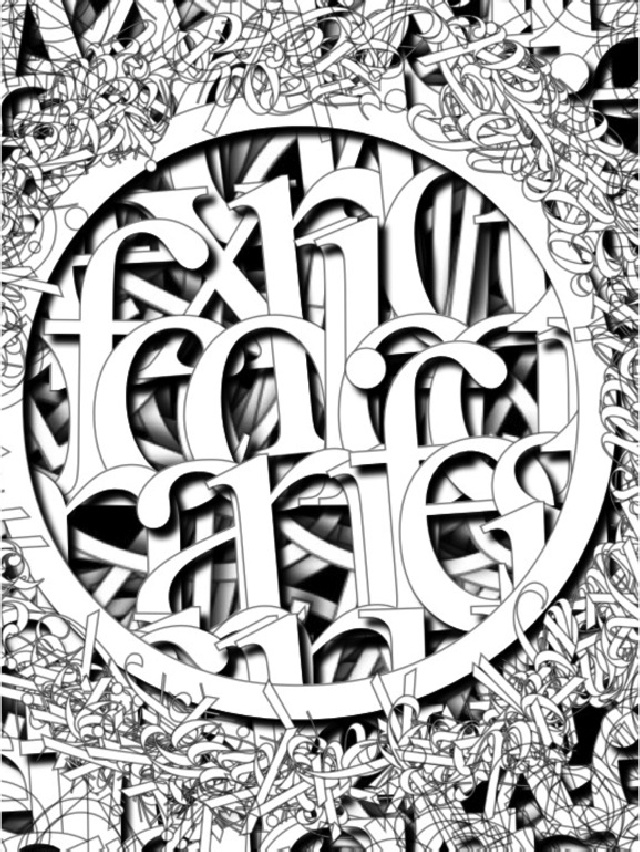The letter as image, the image as letter

Nico Vassilakis, Letters of Intent (self-published, 2013), 140 pp.—As one of the foremost practitioners of vispo, Vassilakis has been a proficient stylist and spokesman for the “movement.” Nonetheless, this collection of his work raises questions about the interzone occupied by vispo producers. In a recent interview Vassilakis makes it clear that vispo is neither art nor poetry. As a “bastard child” of both, vispo, for Vassilakis, is about the digital manipulation of the letter in order to foreground its visual properties. However, we can specify its “parents”; vispo resembles nothing so much as a combination of naïve art (a subcategory of “outsider” art) and concrete poetry. The common denominator of representation and realism of these movements can clearly be seen in Vassilakis’ work. The curious intertwining of pre-modernist and post-modernist sensibilities, to say nothing of the European and South American (specifically, Brazilian) legacies of these two movements, also show up in Letters of Intent as a penchant for florid, if not quite lurid, colors, shapes and “statements.” The latter is of particular interest to me, given Vassillakis’ focus on the letter. Obviously I cannot quote anything from the book since its visual appearance is meant to trump semantics. Still, the question of vispo’s aesthetics remains, I think, unanswered, which is to say, problematic. For one thing, despite the focus on the letter, not only are there letters in strange combinations—somewhat like those magnets on refrigerators—but there are also phrases and sentences, drawings and illustrations reducible to semantics, if not representational realism. In brief, Letters of Intent is interesting to view, not as interesting to “read.” One wonders if an art critic might reverse those last two judgments. But it may be that institutional criticism, literary or artistic, is beside the point insofar as vispo attempts to bypass the standard parameters of legitimization. Perhaps “intent”—not letters—is the key word in the title, though the problem of intention has been vetted theoretically and aesthetically by critics and writers too numerous to list. Perhaps vispo is still too young to articulate its vitality, its significance; does that, one wonders, remain a future project? Will, one wonders, vispo require its own body of vispo critics? A good place to start might be with The Last Vispo Anthology, co-edited by Vassilakis, as well as this attached review of the book (http://bodyliterature.com/2012/10/26/friday-pick-the-last-vispo-anthology/).

Hunches, hedges, etc.